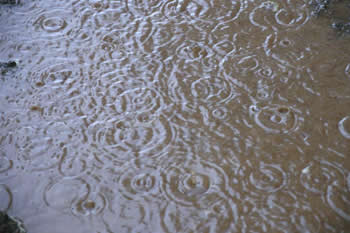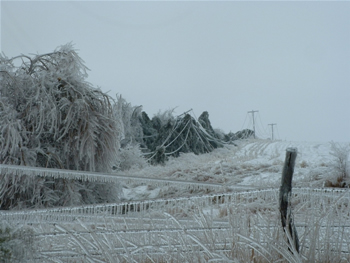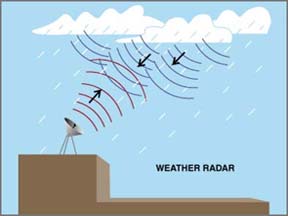This is one of the largest hailstones ever observed in the United States. The stone fell on June 22, 2003 in Aurora, Nebraska.
Click on image for full size
Courtesy of University Corporation for Atmospheric Research
Related links:
Precipitation
Hail
Hail forms in a cumulonimbus cloud from graupel, large frozen raindrops, that are tossed around the cloud by wind. The top of a cumulonimbus cloud reaches high heights in the sky where temperatures are cold enough to freeze water. A hailstone grows larger when supercooled water droplets freeze on contact with a hailstone. The longer a hailstone stays within a cloud the larger it becomes. When itís too heavy it will fall to the ground. Some hail reaches the ground as rain because the air below the cloud is warm or because the hail was small when it fell from the cloud.
Most hailstones are about the size of peas. The heaviest one in the United States was the size of a cantaloupe and fell on Coffeyville, Kansas in September of in 1970. In Canada, the largest hailstone measuring 4 inches (10cm) fell on Saskatchewan in August of 1973. The color of hail is either transparent or partially opaque. Hail can fall during violent thunderstorms in the summer. In cumulonimbus clouds, hailstones can grow so large and fall so quickly that warm summer temperatures don't completely melt them before they hit the ground.
Large hailstones can break windows, dent cars, damage roof of homes, and cause damage to crops. One hailstorm can destroy a farmerís entire crop in minutes. In the United States, hail causes hundreds of millions of dollars of damage each year.
You might also be interested in:

Cumulonimbus clouds belong to the Clouds with Vertical Growth group. They are generally known as thunderstorm clouds. A cumulonimbus cloud can grow up to 10km high. At this height, high winds will flatten
...more
Wind is moving air. Warm air rises, and cool air comes in to take its place. This movement creates different pressures in the atmosphere which creates the winds around the globe. Since the Earth spins,
...more
Rain is precipitation that falls to the Earth in drops of 5mm or more in diameter according to the US National Weather Service. Virga is rain that evaporates before reaching the ground. Raindrops form
...more
Thunderstorms are one of the most thrilling and dangerous types of weather phenomena. Over 40,000 thunderstorms occur throughout the world each day. Thunderstorms form when very warm, moist air rises into
...more
The Earth travels around the sun one full time per year. During this year, the seasons change depending on the amount of sunlight reaching the surface and the Earth's tilt as it revolves around the sun.
...more
Sleet forms when a partially melted snowflake or raindrop turns back into ice as it is falling through the air. Sleet starts out in the clouds as a snowflake or a raindrop. If it starts out as a snowflake,
...more
Radar is important to weather forecasters because it can detect rain and hail. The radar bounces radio waves off water particles in clouds. A computer measures how long it takes for the radio waves to
...more














